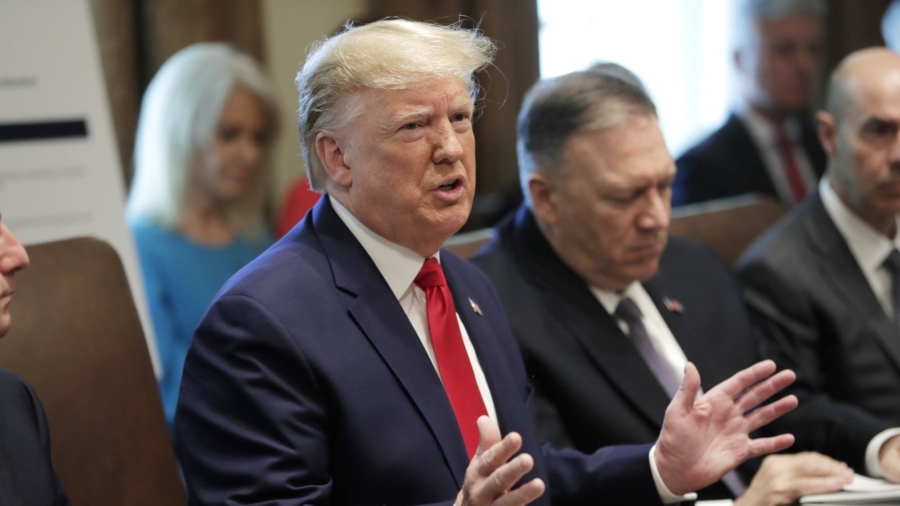President Donald Trump said at a cabinet meeting on Monday, Oct. 21, that the U.S. troops pulled out of Syria would be ultimately coming home.
“They’re going to be sent initially to different parts, get prepared, and then ultimately we’re bringing them home,” Trump said. “We’re bringing our troops back home. I got elected on bringing our soldiers back home, Now, it’s not very popular within the Beltway, because, you know, Lockheed doesn’t like it, and these great military companies don’t like it. It’s not very popular.”
He said the hardest thing he does is writing letters to parents of soldiers killed in the line of duty.
“I send many letters home to parents; their son or daughter has been killed over in the Middle East. For what? For what? There are times to fight and there are times not to fight. There are times to be smart,” Trump said.

Trump also said it appeared a five-day pause negotiated last week in the Turkish offensive against the Kurdish-led fighters in northern Syria was holding despite some skirmishes, and that it could possibly go beyond Tuesday’s expiration.
“I’m sure if we needed a little extension that would be happening,” he told reporters at the meeting.
Turkey began its cross-border operation following Trump’s decision two weeks ago to withdraw U.S. troops from the area. U.S officials said then that those troops were expected to be repositioned in the region. Some of them could go to Iraq.
A small number of U.S. troops would stay “in a little different section to secure the oil,” as well as in “a totally different section of Syria near Jordan and close to Israel,” Trump said on Monday.
“That’s a totally different mindset,” Trump said, adding: “Other than that, there’s no reason” for U.S. troops to remain.

No Approval to Stay in Iraq
The Iraqi military said on Tuesday that U.S. forces that crossed into Iraq as part of a pull-out from Syria do not have permission to stay and can only be there in transit.
“All U.S. forces that withdrew from Syria received approval to enter the Kurdistan Region so that they may be transported outside Iraq. There is no permission granted for these forces to stay inside Iraq,” the Iraqi military said.
U.S. Defense Secretary Mark Esper said Washington’s objective was for the troops not to remain in Iraq.
“The aim isn’t to stay in Iraq interminably, the aim is to pull our soldiers out and eventually get them back home,” Esper said at the Prince Sultan Air Base near Riyadh, Saudi Arabia.

Esper said the details had not yet been worked out on how long the U.S. troops would stay in Iraq and he would be having discussions with his Iraqi counterpart on Wednesday.
It is unclear whether the U.S. troops will use Iraq as a base to launch ground raids into Syria and carry out airstrikes against ISIS terrorists.
The additional U.S. troops would add to the more than 5,000 American troops based in the country, training Iraqi forces and helping to ensure that ISIS terrorists do not make a comeback.
Reuters contributed to this report.


